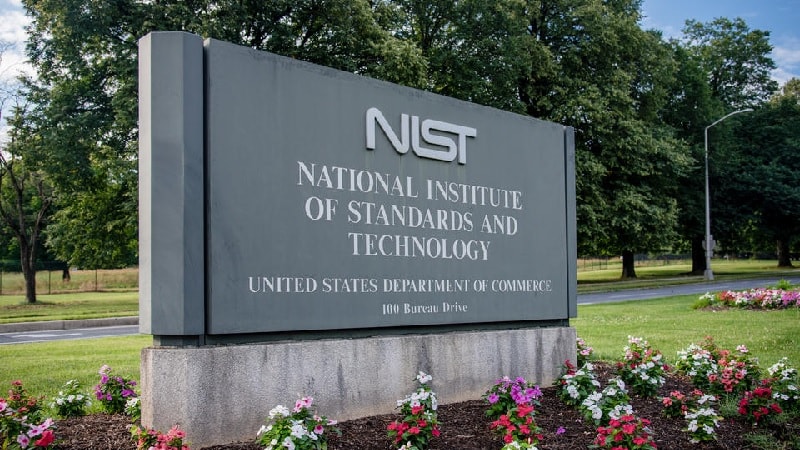
The National Institute of Standards and Technology (NIST) today launched the first version of the agency’s Artificial Intelligence (AI) Risk Management Framework (RMF), after spending 18 months developing the policy.
In 2020, the National AI Initiative Act directed NIST to create the AI RMF – which is intended to serve as a critical tool with recommendations and best practices for the design, development, and use of trustworthy AI.
“The framework is intended for voluntary use,” said NIST Director Laurie Locascio. “It provides a flexible but structured and measurable approach to understand and measure and manage AI risks.”
She continued, “It is intended to be applied across a wide range of perspectives, a wide range of sectors and technology domains, and should be universally applicable to any AI technology.”
The agency began the congressionally mandated development of the framework in July 2021, and has included extensive input from government, academic, and industry stakeholders.
“The AI RMF has been developed through a consensus driven, open, and transparent process; collaborative with you and the community,” Locascio told the audience during NIST’s official launch event on Jan. 26. “We’ve heard from more than 240 organizations across private industry, academia, civil society, and government.”
NIST kicked off the development of the framework seeking comments on the AI RMF from the public before holding a workshop to hear from more stakeholders in October 2021. The first draft was released in March 2022, followed by two more public workshops. The second draft was released just five months ago.
“This was an enormous task that relied upon a massive amount of community involvement,” Department of Commerce Deputy Secretary Don Graves said today.
“[The AI RMF] should help to accelerate AI innovation and growth while advancing – rather than restricting or damaging – civil rights, civil liberties, and equity,” he said.
NIST worked closely with the White House’s Office of Science and Technology Policy (OSTP) to create the new 48-page document, OSTP’s Principal Deputy Director for Science and Society, Alondra Nelson, said.
“OSTP and NIST were really linking arms to accomplish our shared priorities to ensure U.S. leadership in AI research and development,” she said.
Nelson praised NIST on their work, which she said has been a “cornerstone” of the Biden-Harris administration’s thinking on technology.
“[AI is] built by people, used and governed by people, and they draw on the personal data of billions and billions of people,” she said, adding, “And yet all too often these tools are developed without the input or consent of the people whose lives they will touch.”
“NIST is taking an approach to AI systems, AI risk management, and AI standards that places people at the center,” Nelson said. “Following its Congressional mandate, NIST has gone above and beyond to be inclusive, be engaged, and lift up the diverse perspective of industry, academia, civil society, and government.”
OSTP recently released a Blueprint for an AI Bill of Rights, which Nelson said NIST played a large part in helping the White House tech team develop. The two frameworks are meant to be complimentary, she said.
NIST unveiled its AI RMF today with additional companion documents meant to aid organizations in the practical use of the framework – like an in-depth explainer video and a “crosswalk” to ease agencies into use of the AI RMF.
Additionally, Locascio said an AI RMF Playbook is now available, and NIST is accepting comments on that document until Feb. 27. The agency’s director plans to release an updated version of the playbook this Spring, with a new revision every six months after that.
The agency also released the AI RMF roadmap that helps organizations identify key activities for advancing the framework. Locascio said we should also be on the lookout for the launch of NIST’s Trustworthy and Responsible Resource Center.
This center will highlight organizations that are putting the AI RMF into work, as well as house all the documents to aid organizations on their journey to implementing the framework.
Leaders from the House Science, Space, and Technology Committee – which has jurisdiction over NIST – attended the launch event today, and praised the agency for its timely accomplishment in guidance on the emerging technology.
“It’s important that we advance AI, and we do so in a way that’s rooted in our democratic values with an emphasis on transparency, privacy, and reliability. NIST’s risk management framework will help us do just that,” committee Chairman Frank Lucas, R-Okla., said.
The committee’s ranking member, Rep. Zoe Lofgren, D-Calif., said, “NIST has respect across the government, across the aisle, across the country. I want to congratulate NIST … in following through on what Congress asked you to do.”
“The pace of change has picked up,” Rep. Lofgren said. “It’s up to us to make sure we don’t impede the development of technology, but we put some guardrails up so technology doesn’t damage us.”
